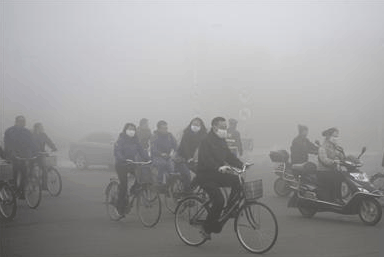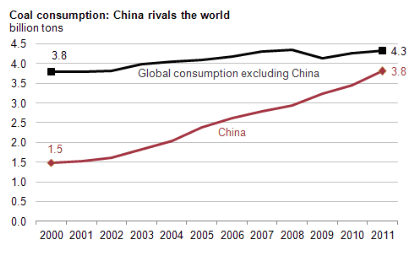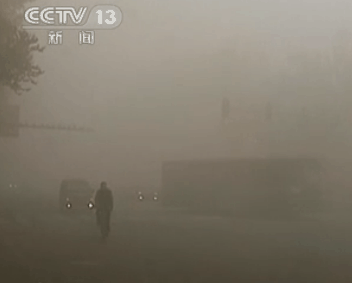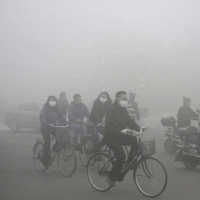
Earlier this year, the Washington Post published an interesting article showing the huge growth of coal consumption in China, which has grown so much that China is now burning nearly as much coal as the rest of the world combined (see next chart).

While the growth in Chinese coal use has been hugely beneficial for Australia’s coal exporters in Queensland and New South Wales, it is presenting a problem for global greenhouse gas emissions, which have soared in recent years despite the reduction of coal use (and carbon emissions) in the United States and Europe.
The increased coal consumption in China is also causing major pollution problems domestically in China. Back in late-January and early-February, pollution levels in Beijing reportedly measured 40 times recommended safe levels, according to The Atlantic. This prompted China’s authorities to undertake short-term mitigation measures, such as shutting down some factories and limiting auto usage.
Now a fresh smog outbreak has occured in China’s northeastern city of Harbin in Heilongjiang province, where pollution levels are so bad that visibility was reduced to only 10 metres, promting the local government to suspend school, shut the airport and some public bus routes.
This news segment from China Television, which is well worth watching, shows just how bad the situation has become in Harbin (some screen shots are below).



Perhaps little wonder, then, why so many wealthy Chinese are looking to emigrate to greener pastures in Australia, New Zealand, Canada, and the US (among other places). And who could blame them.
unconventionaleconomist@hotmail.com

